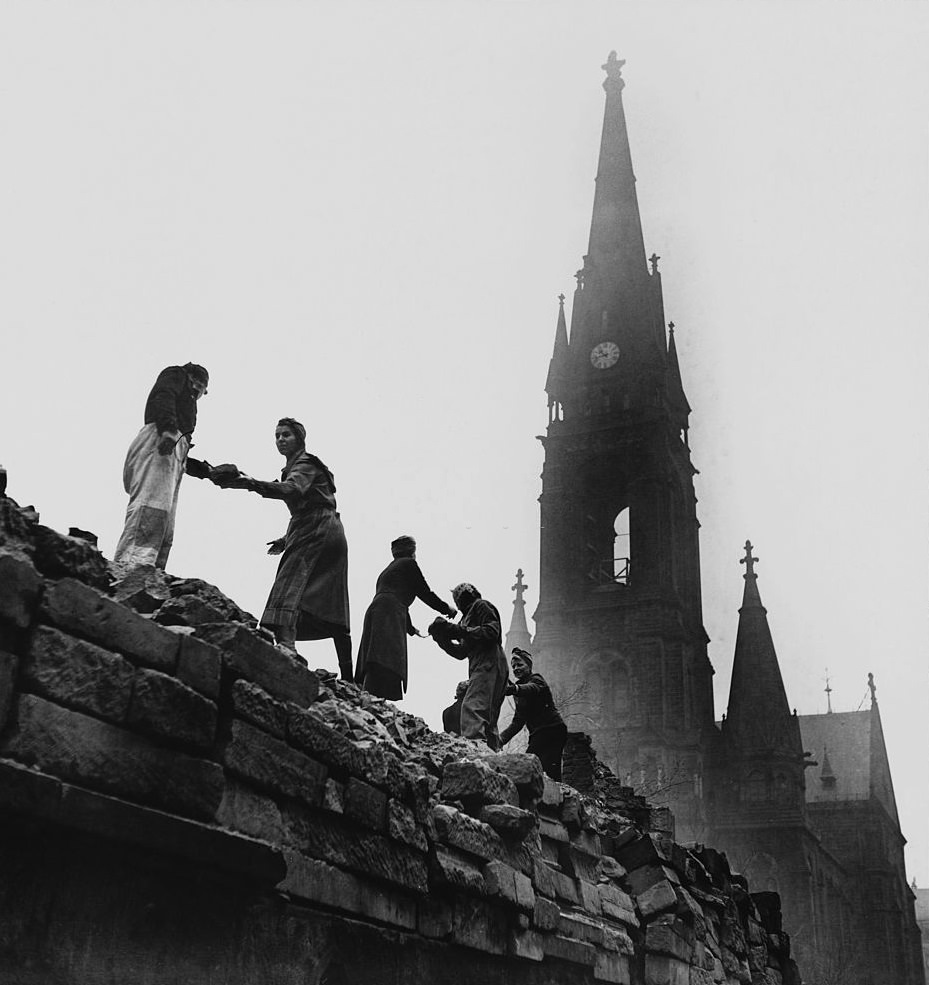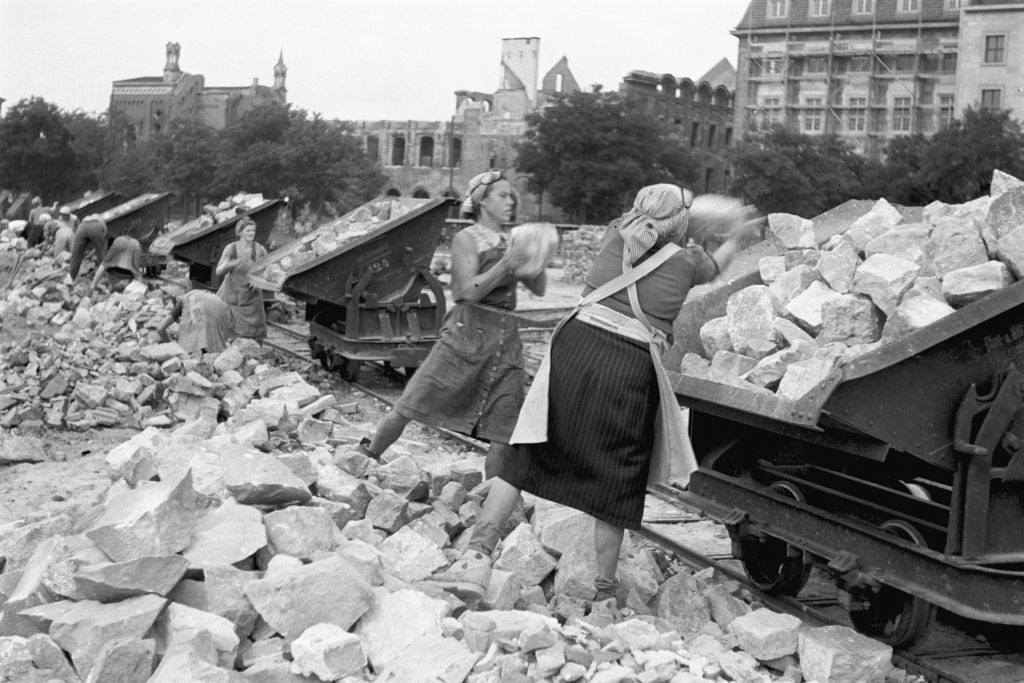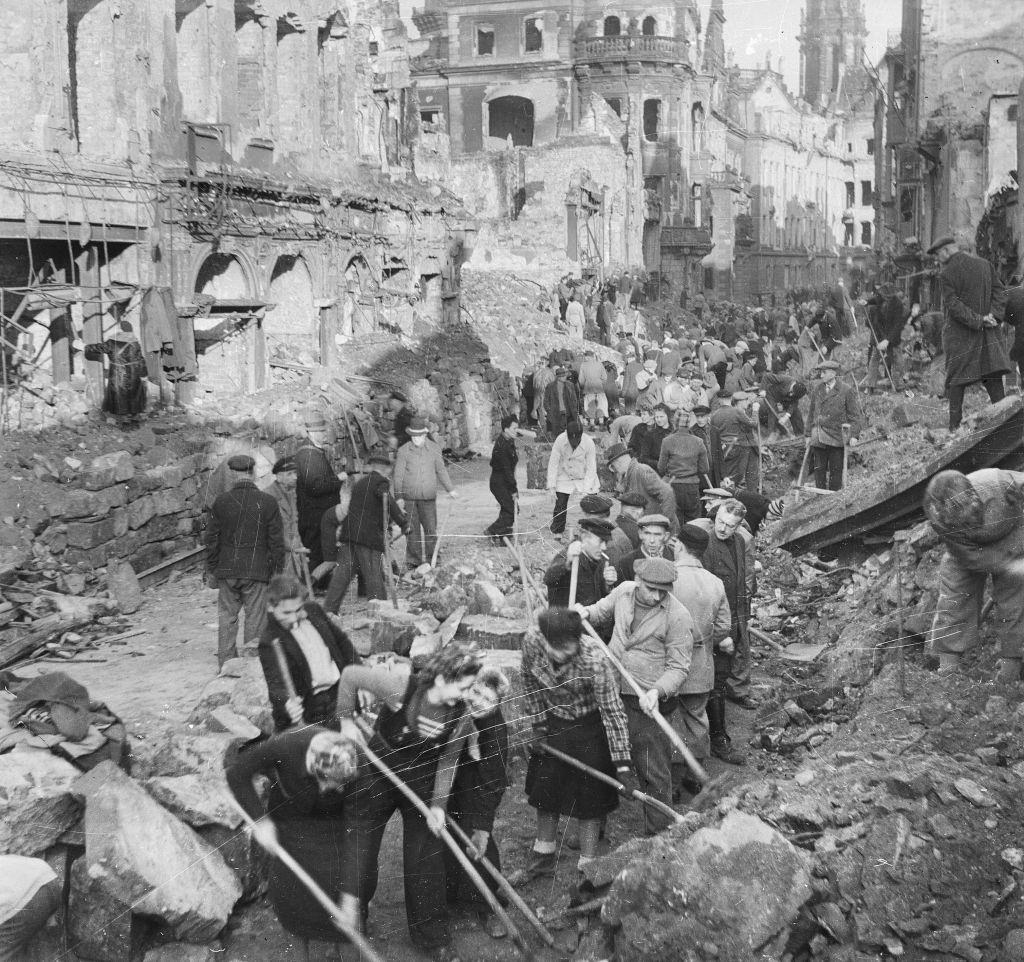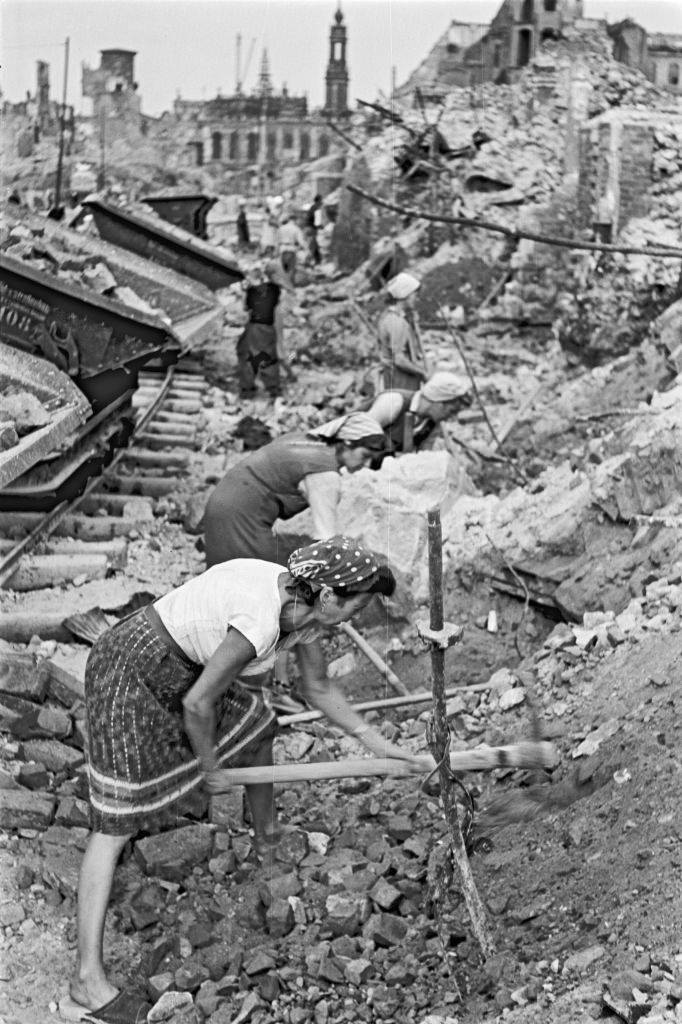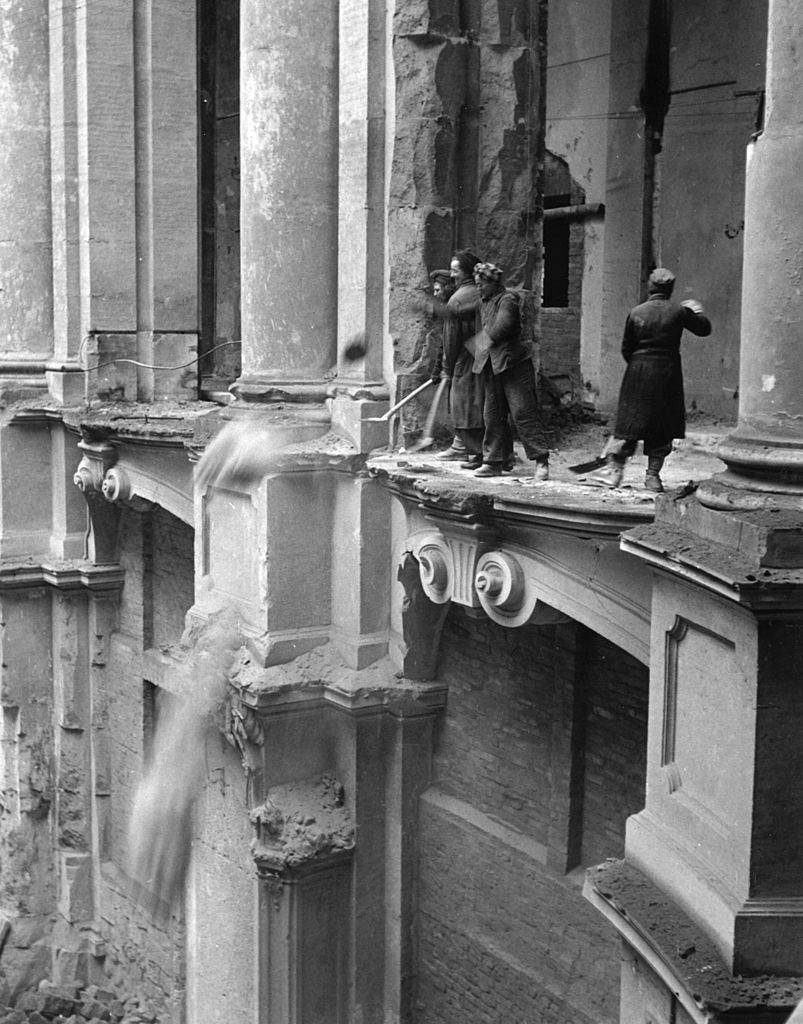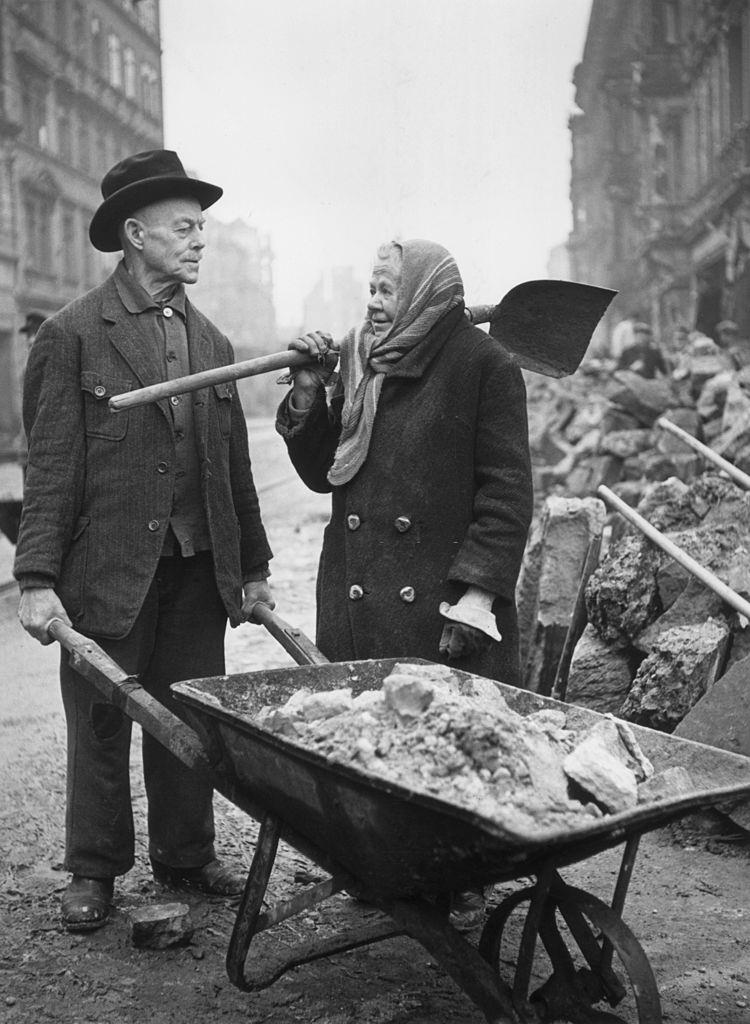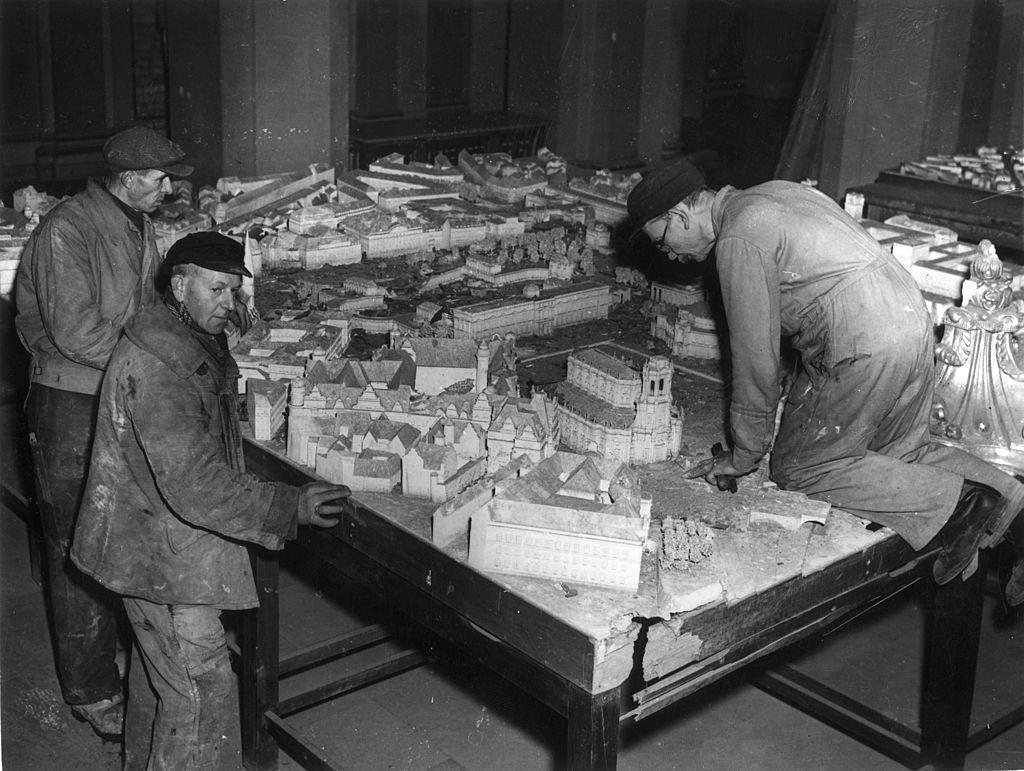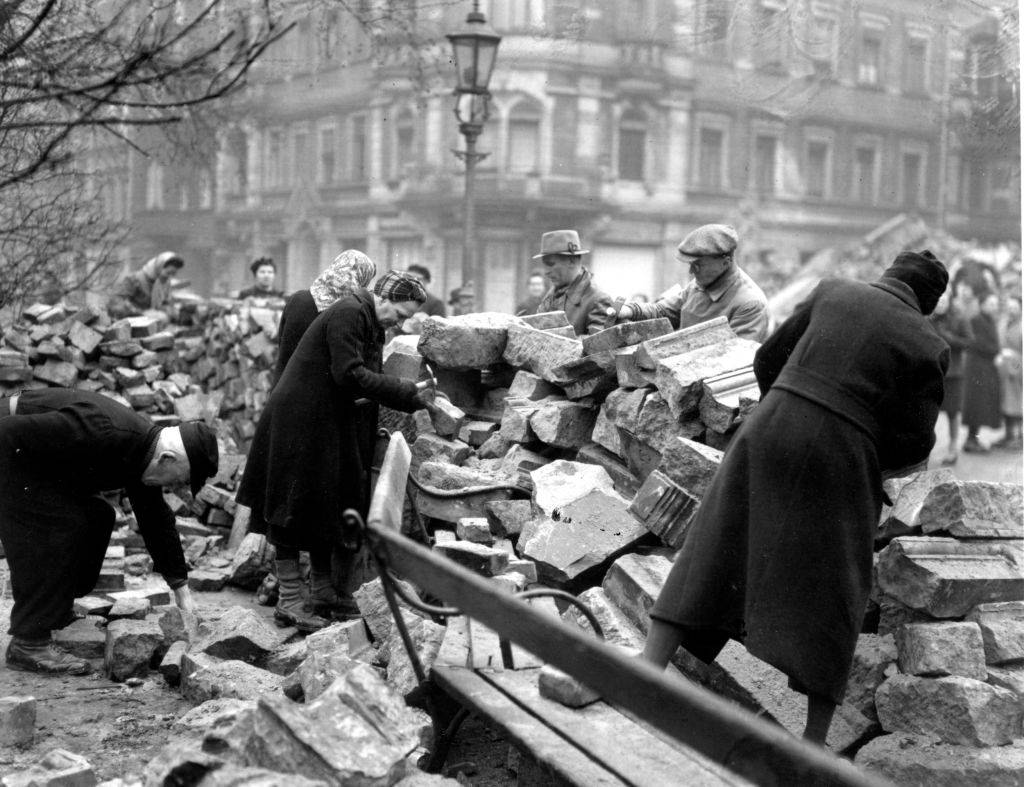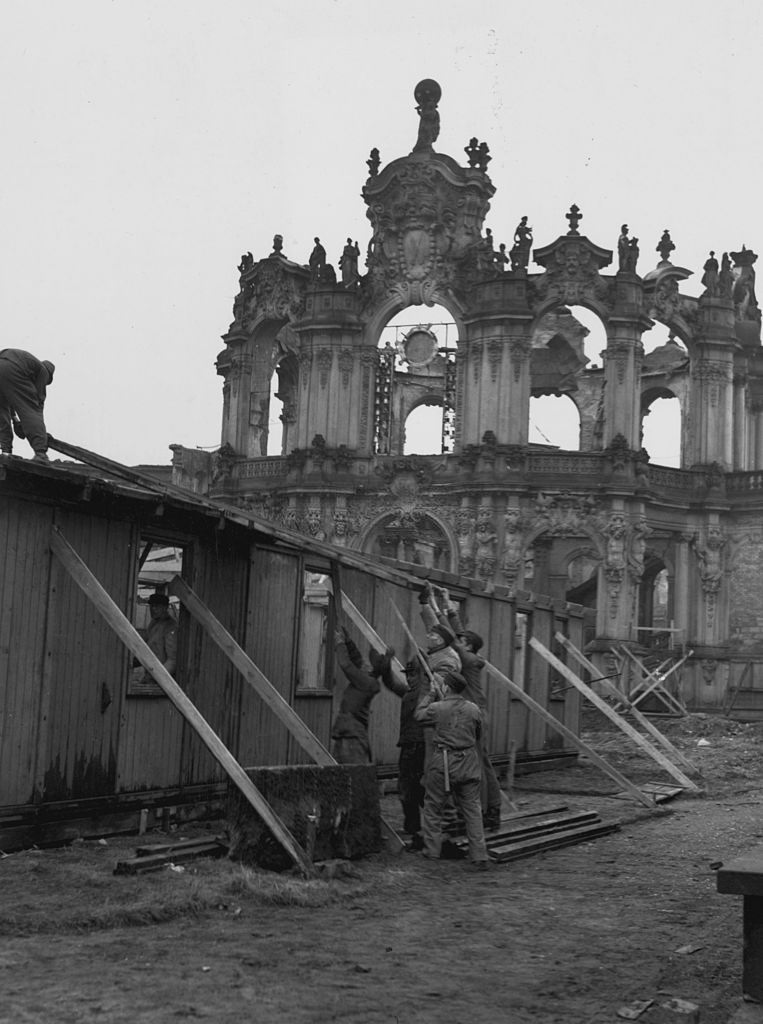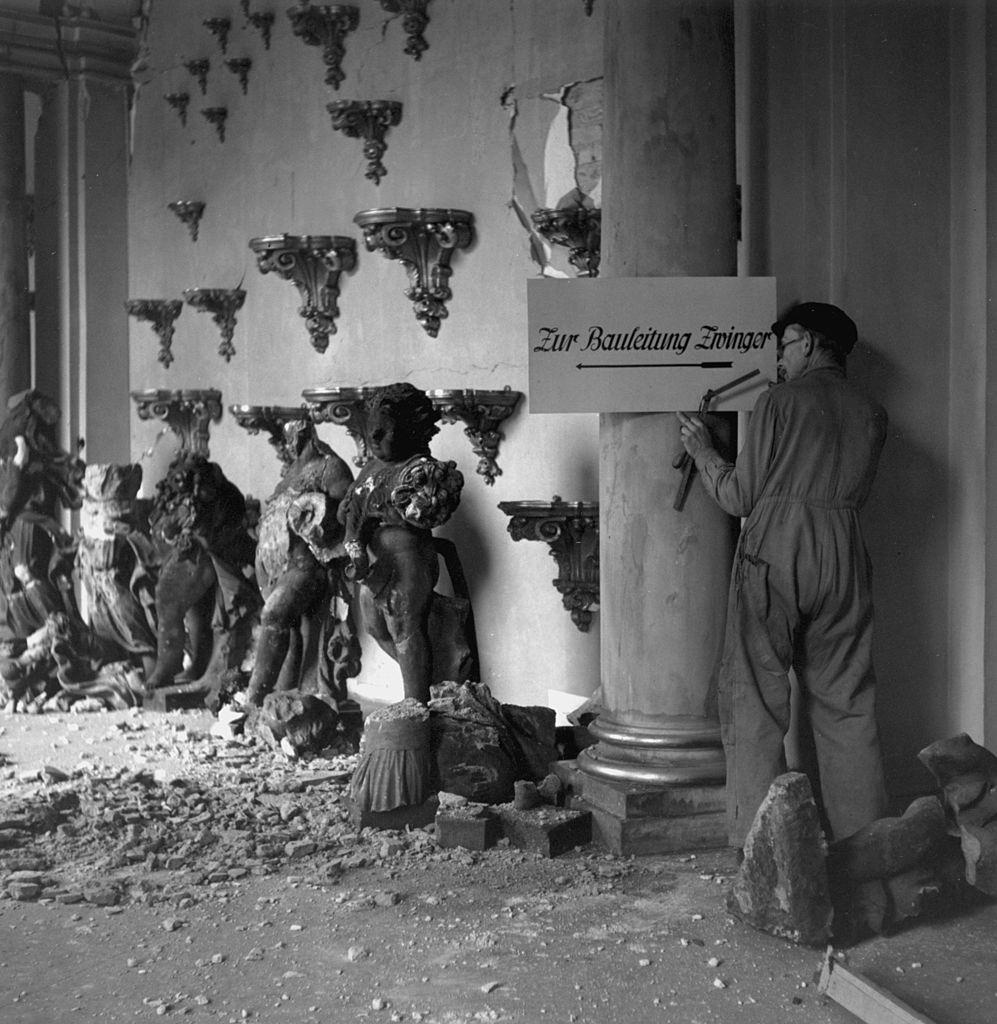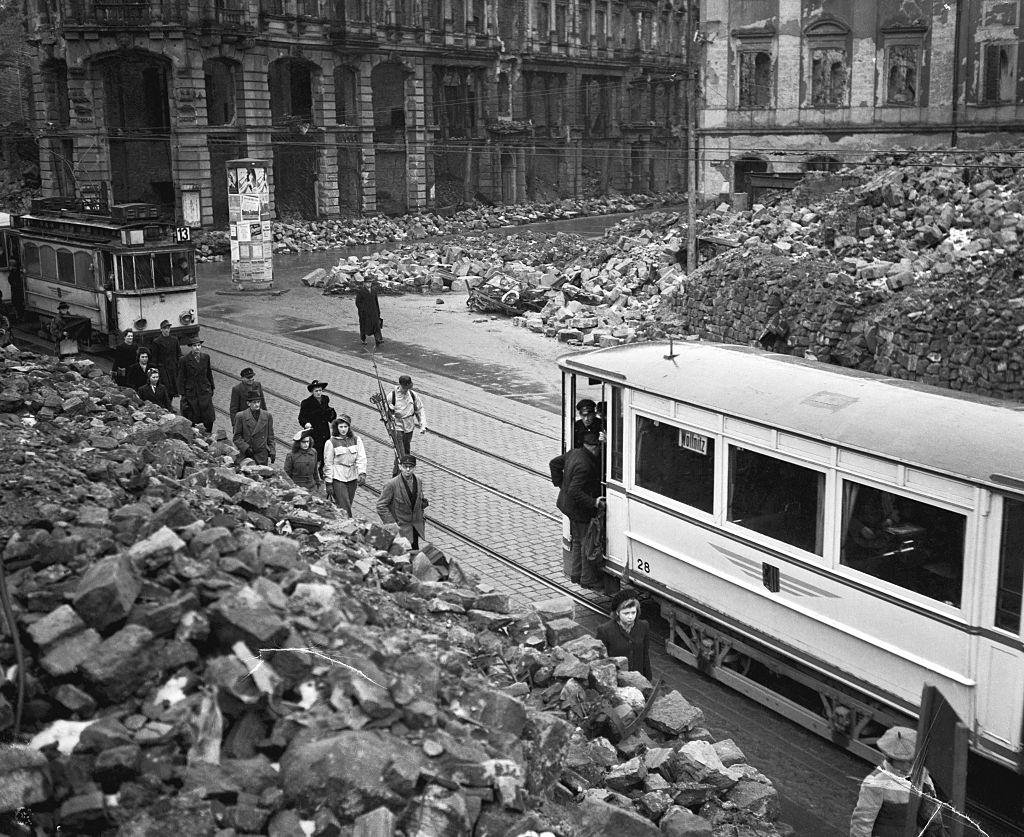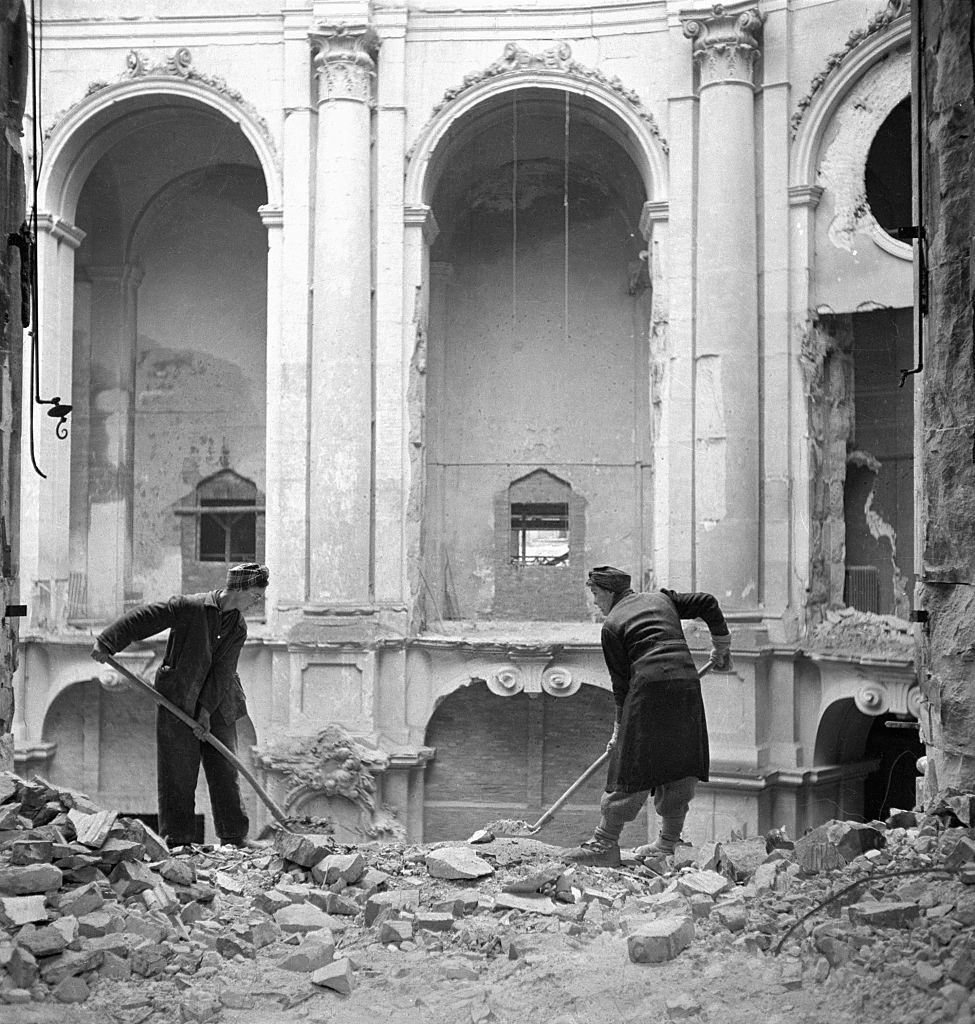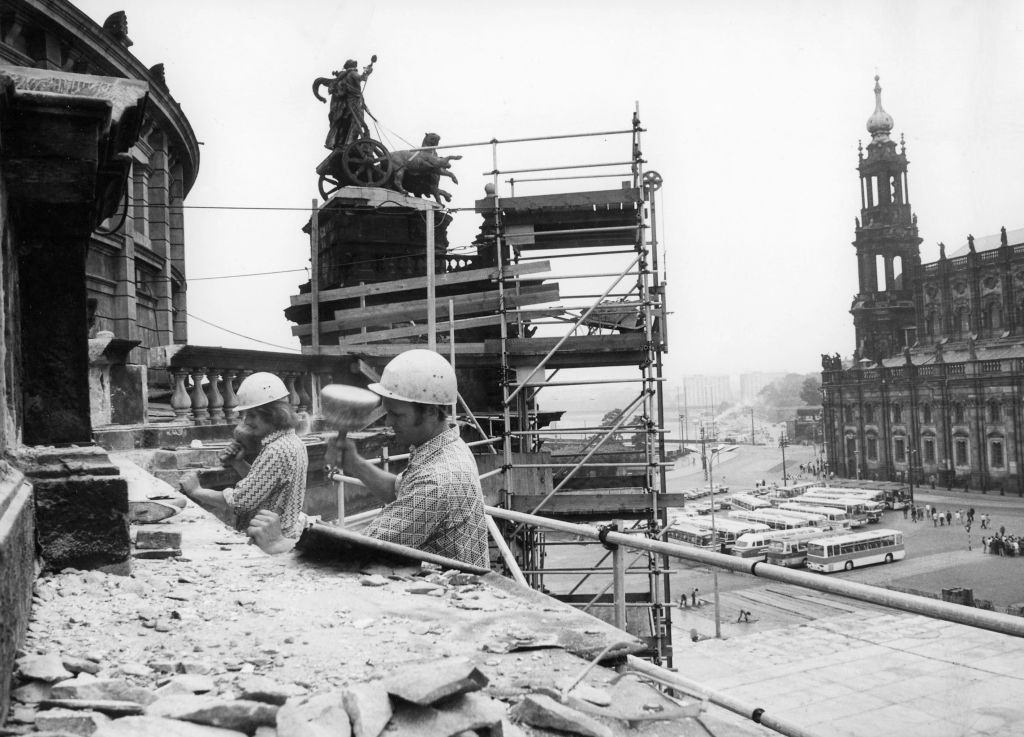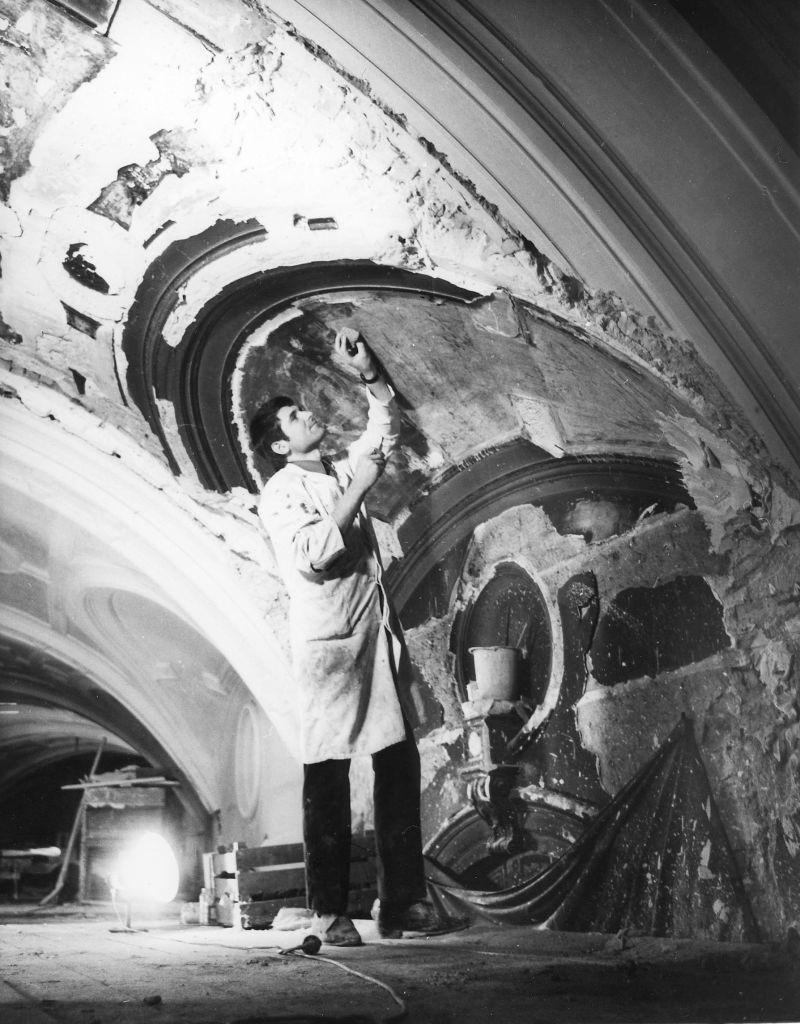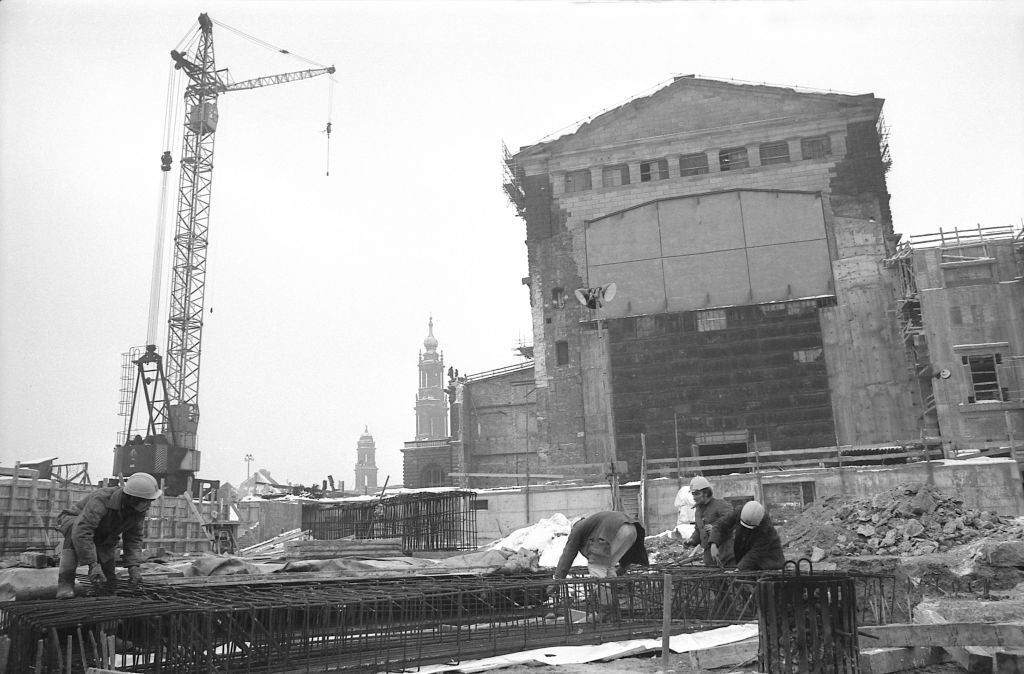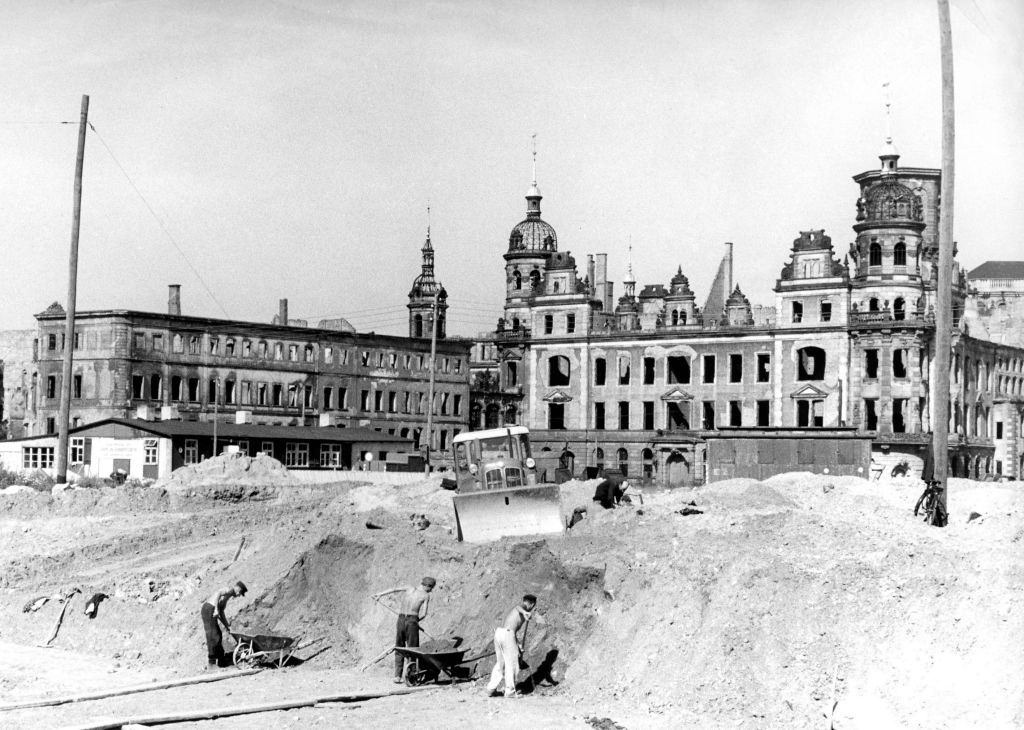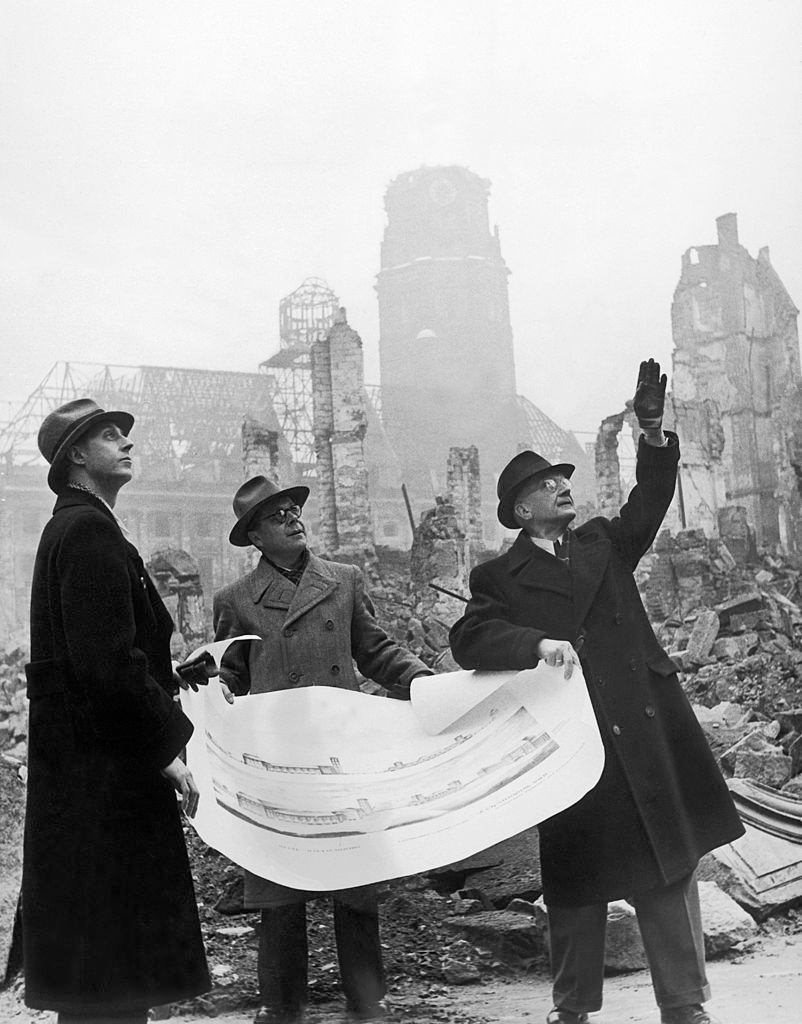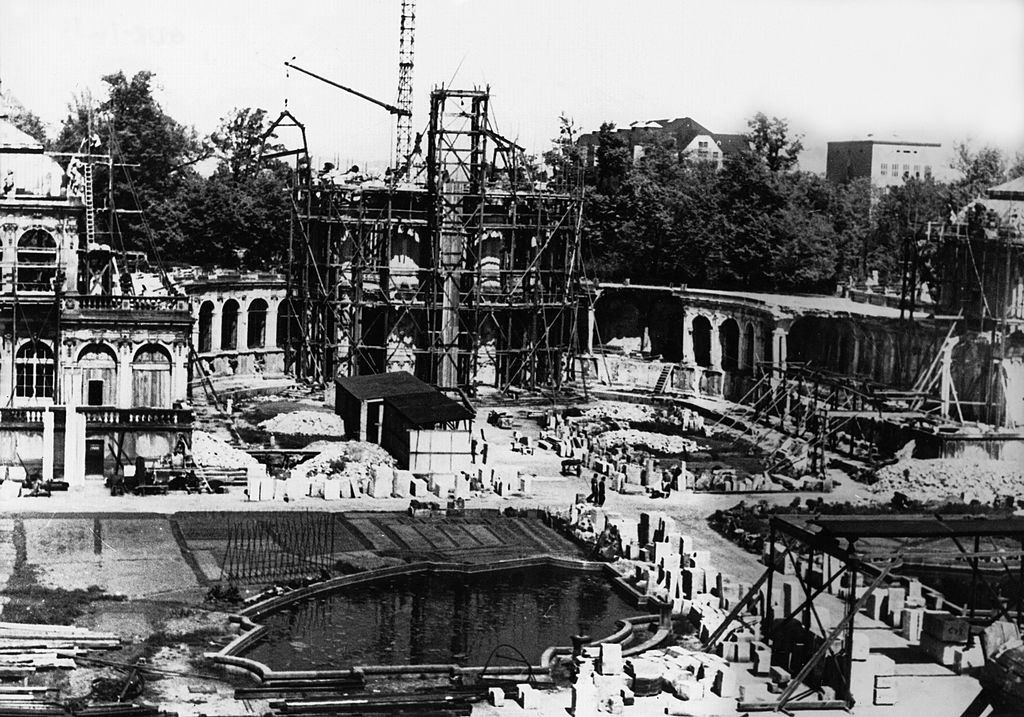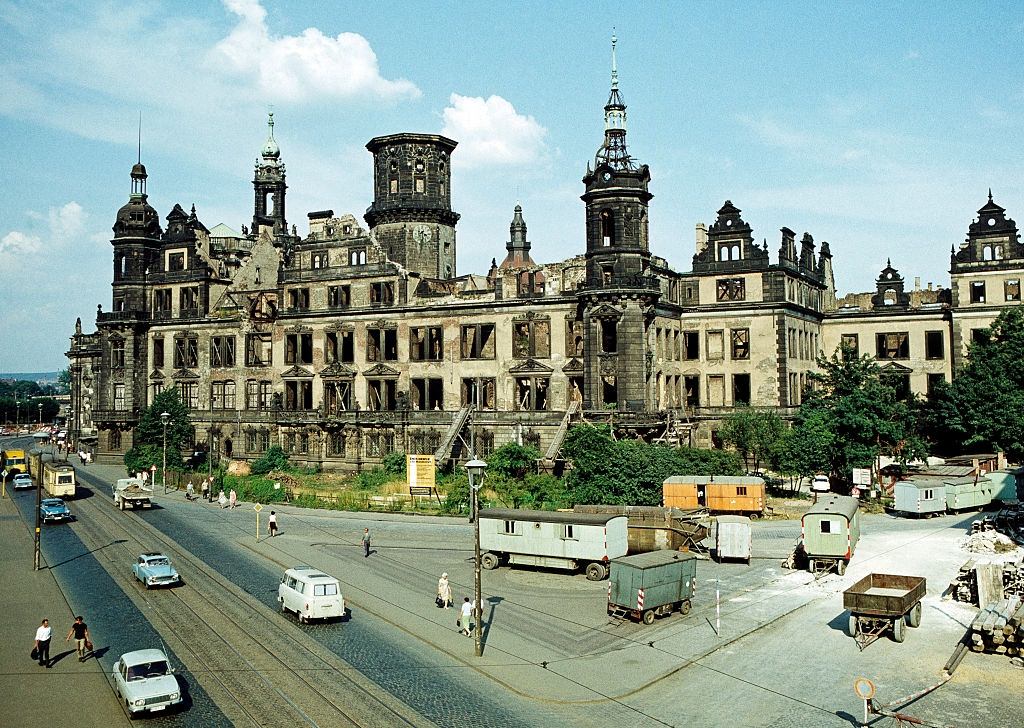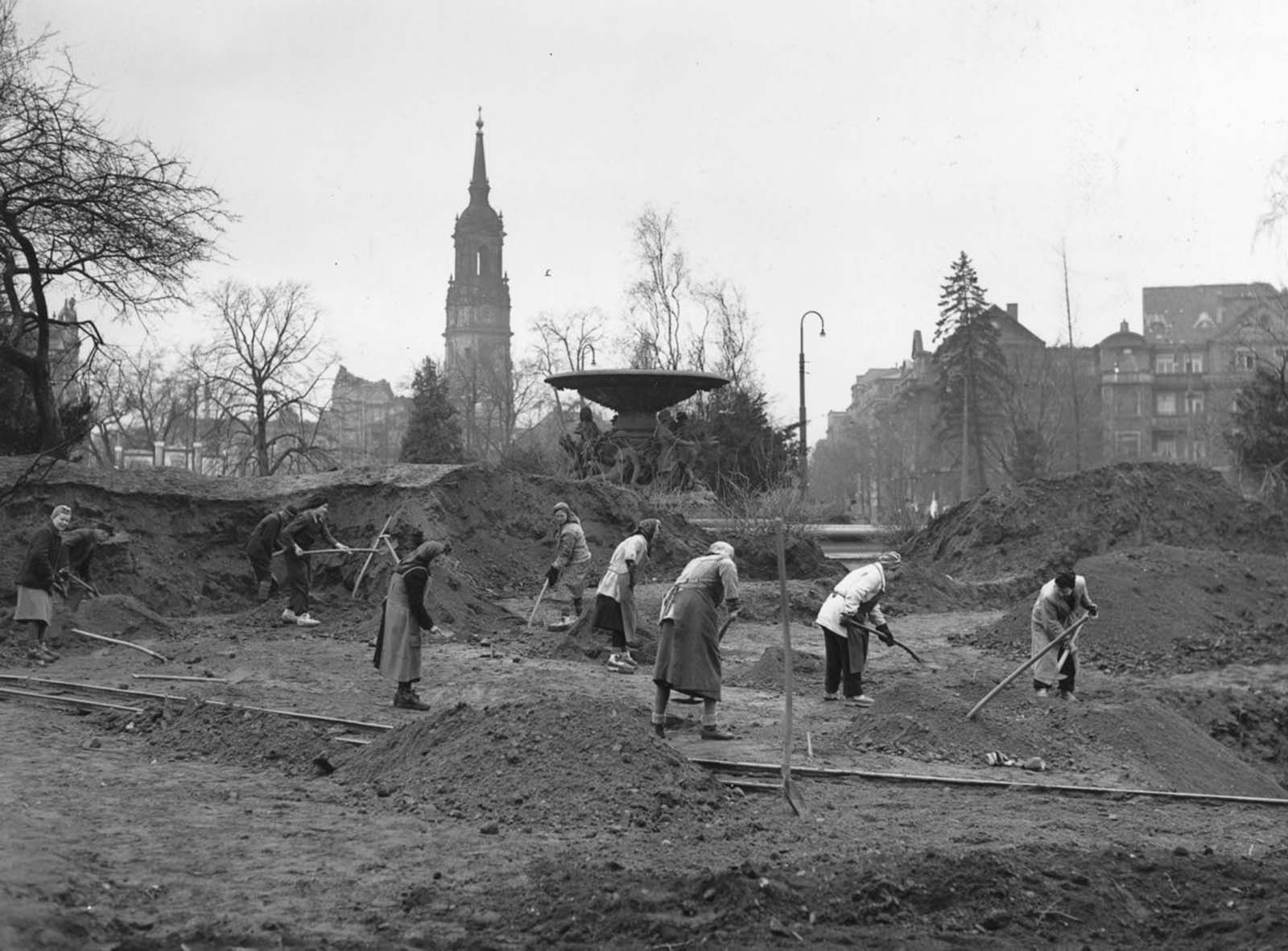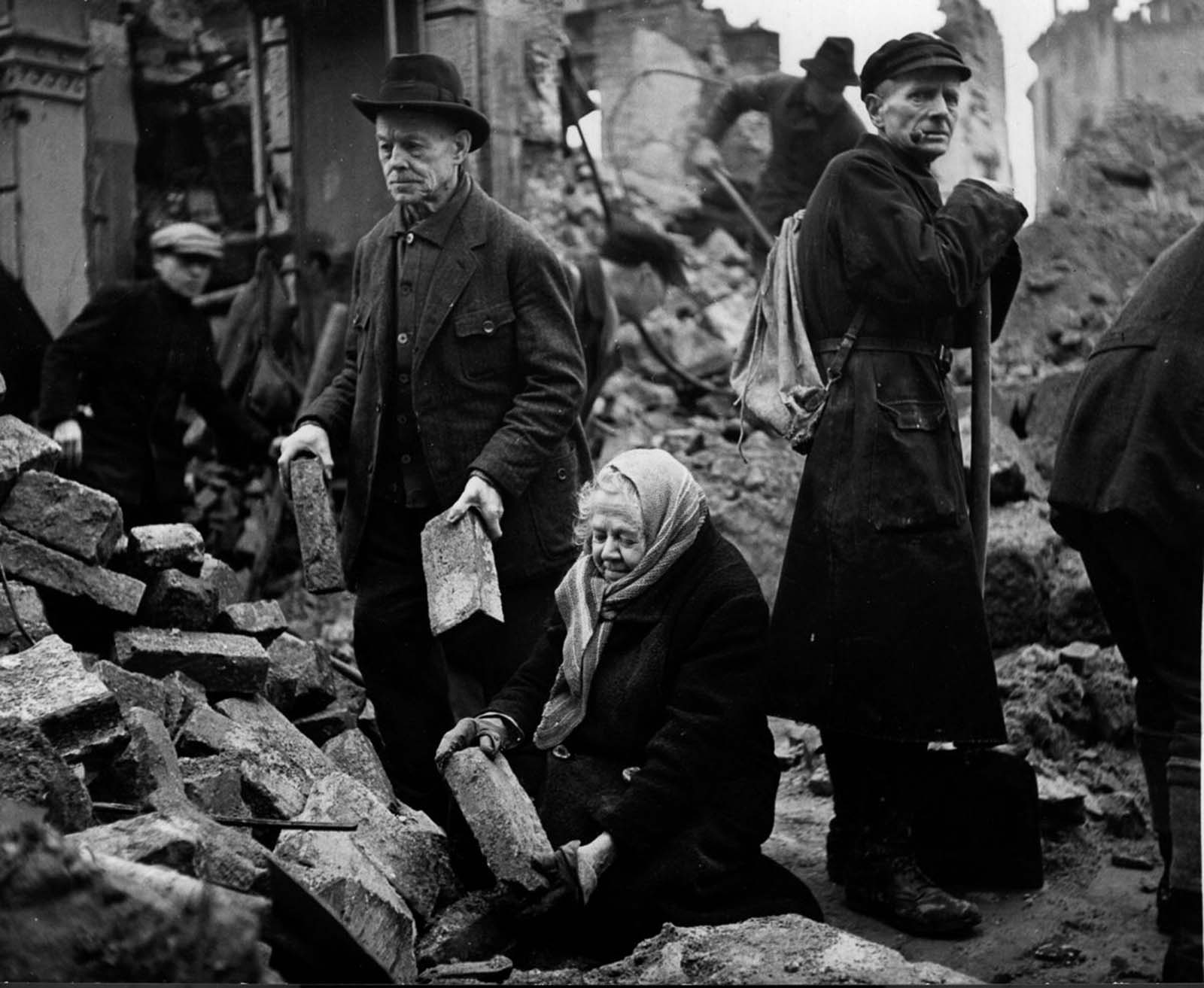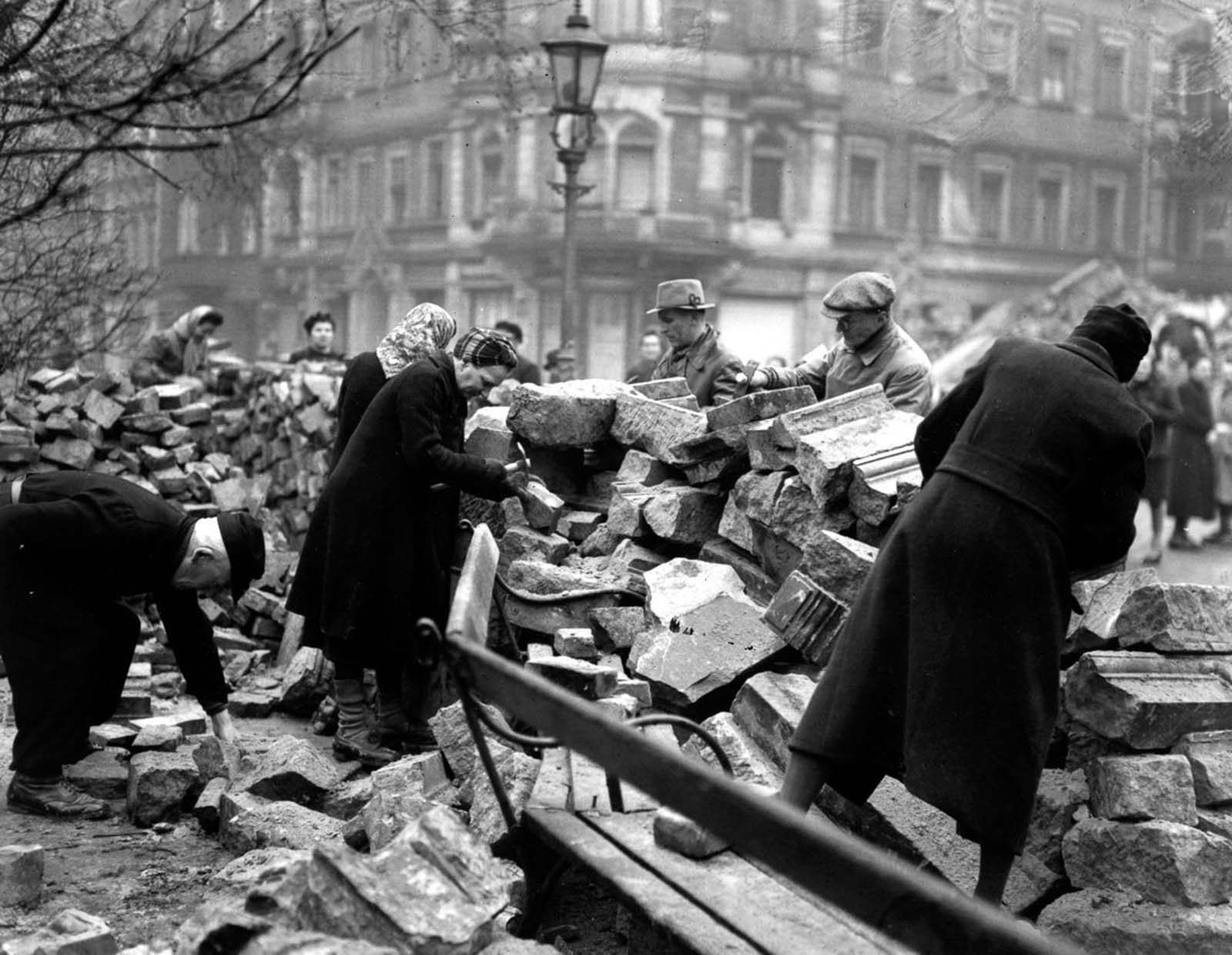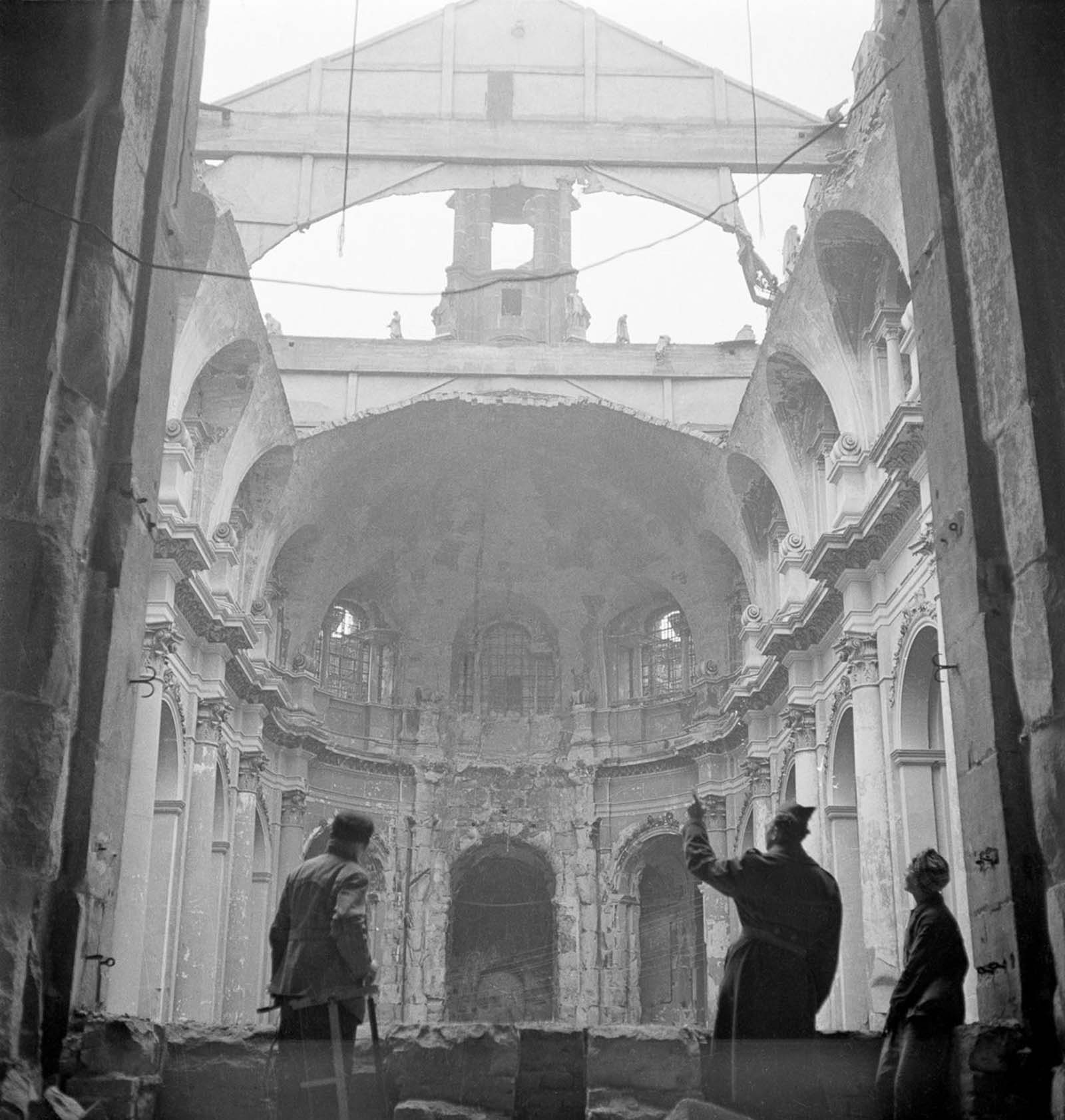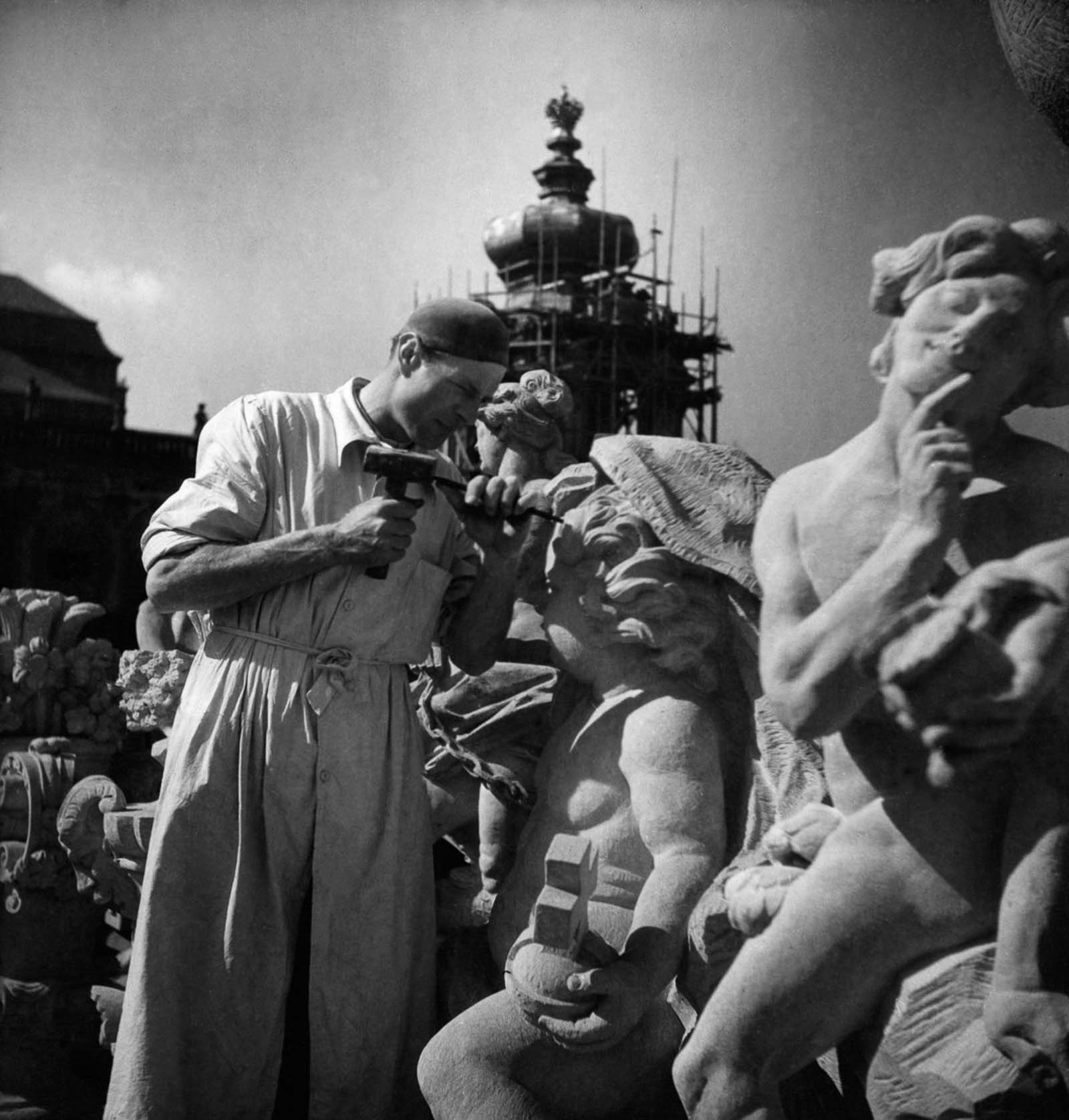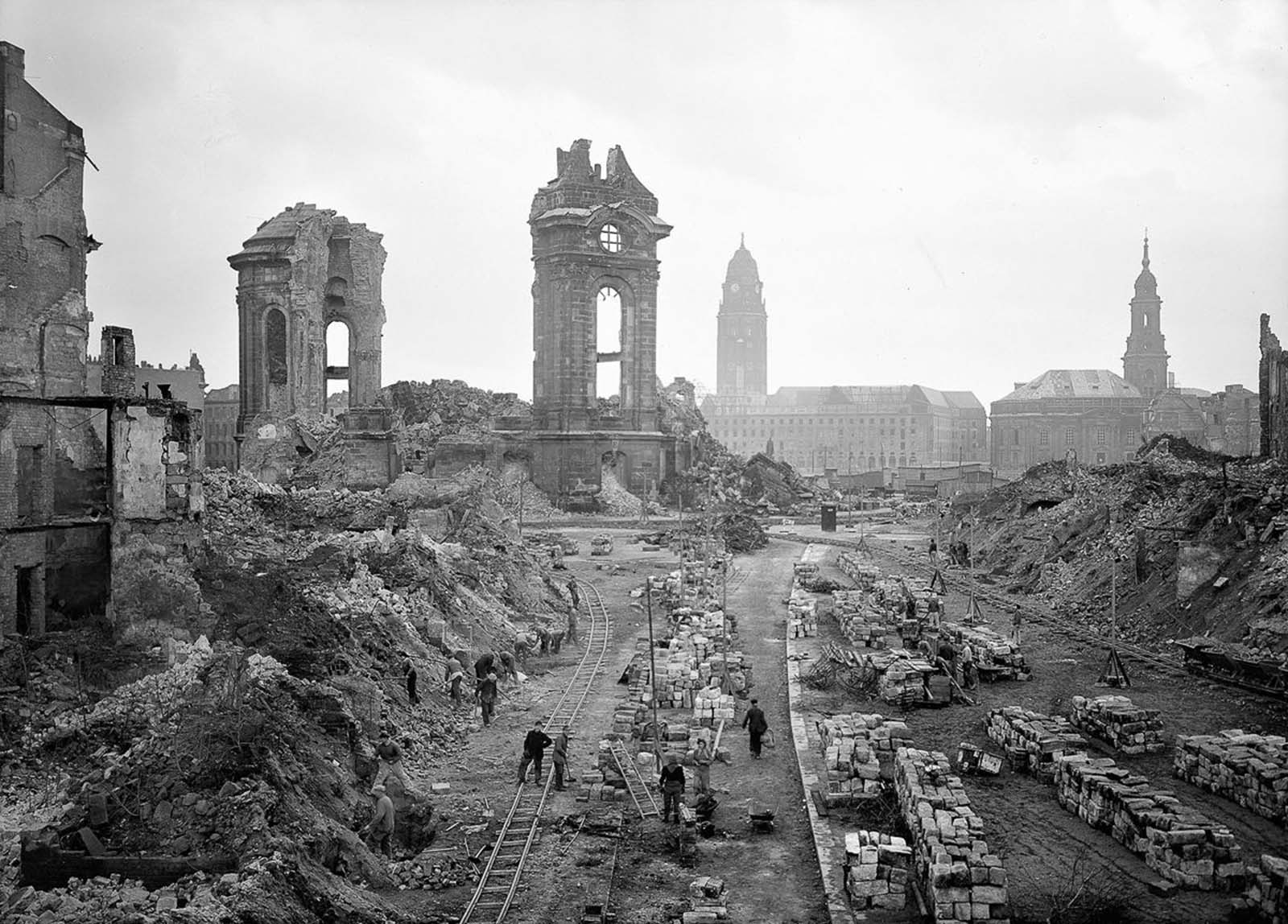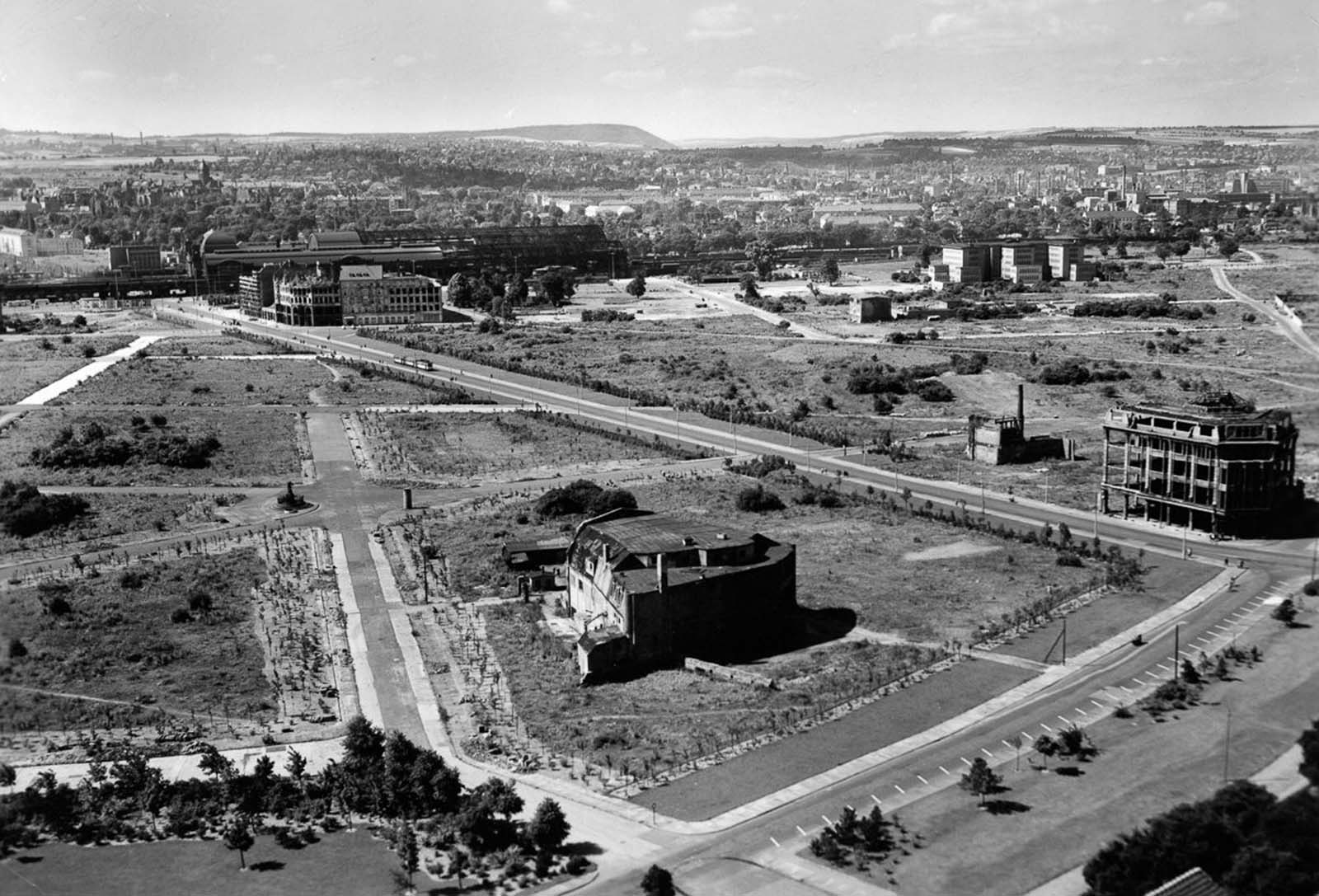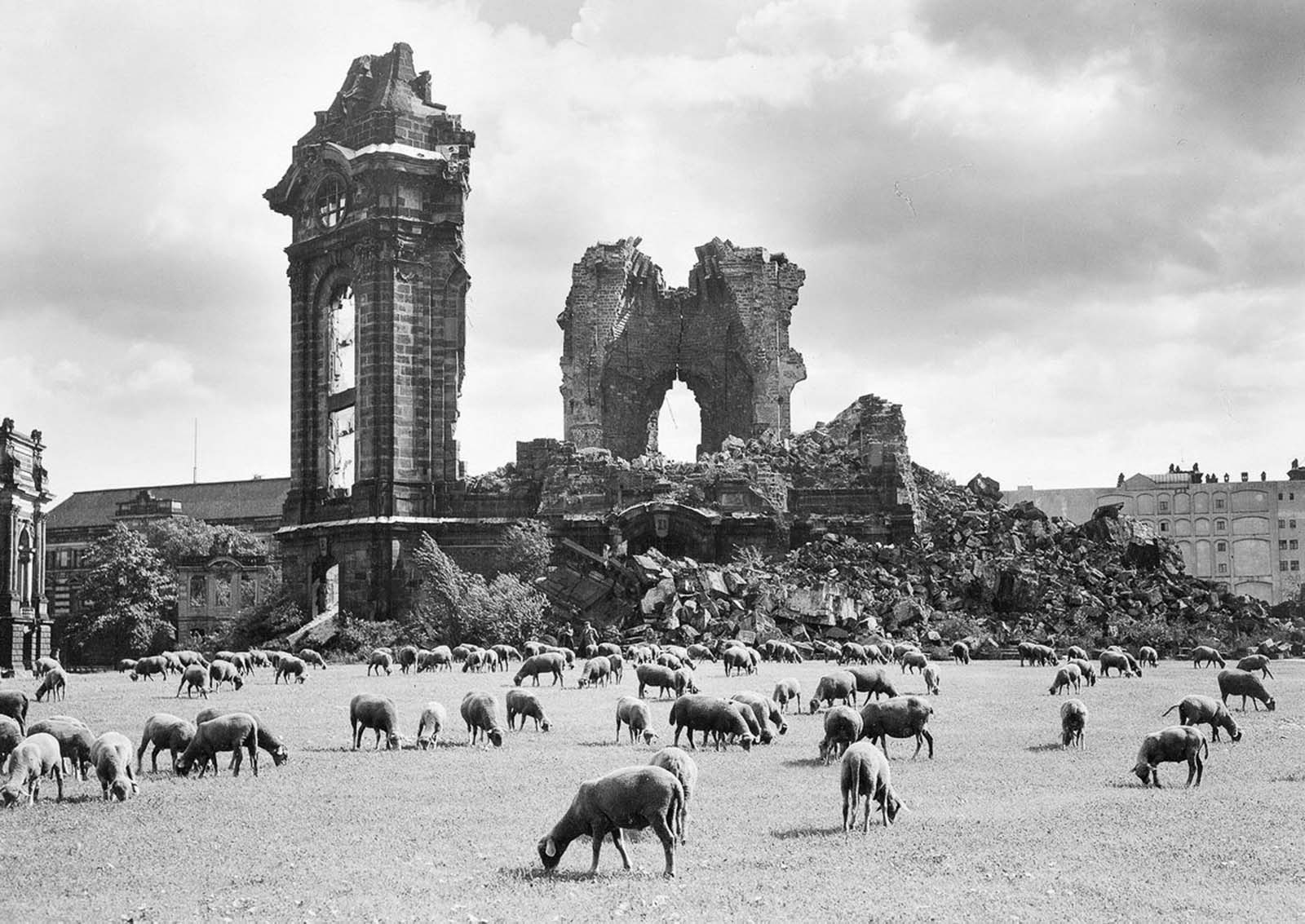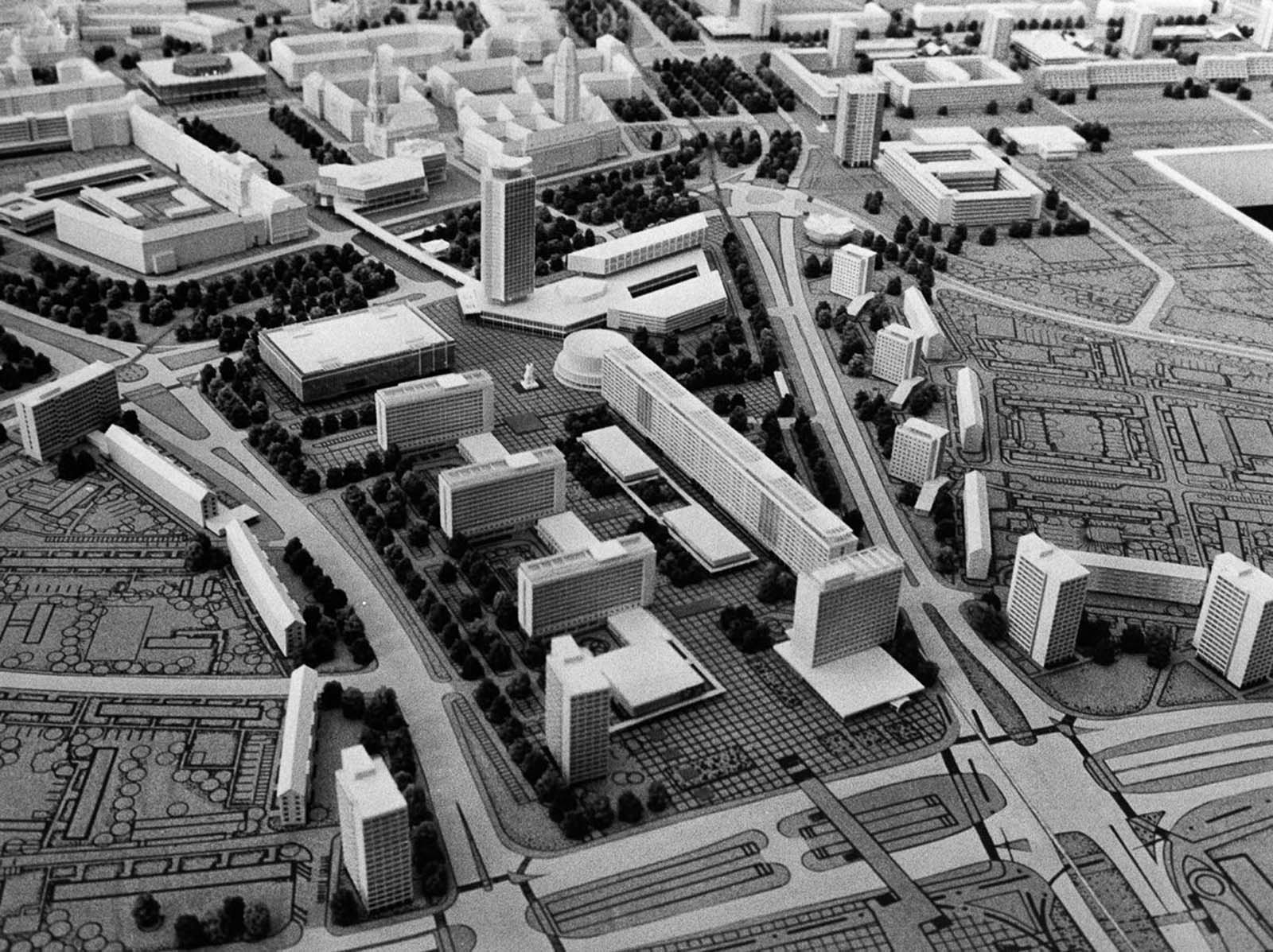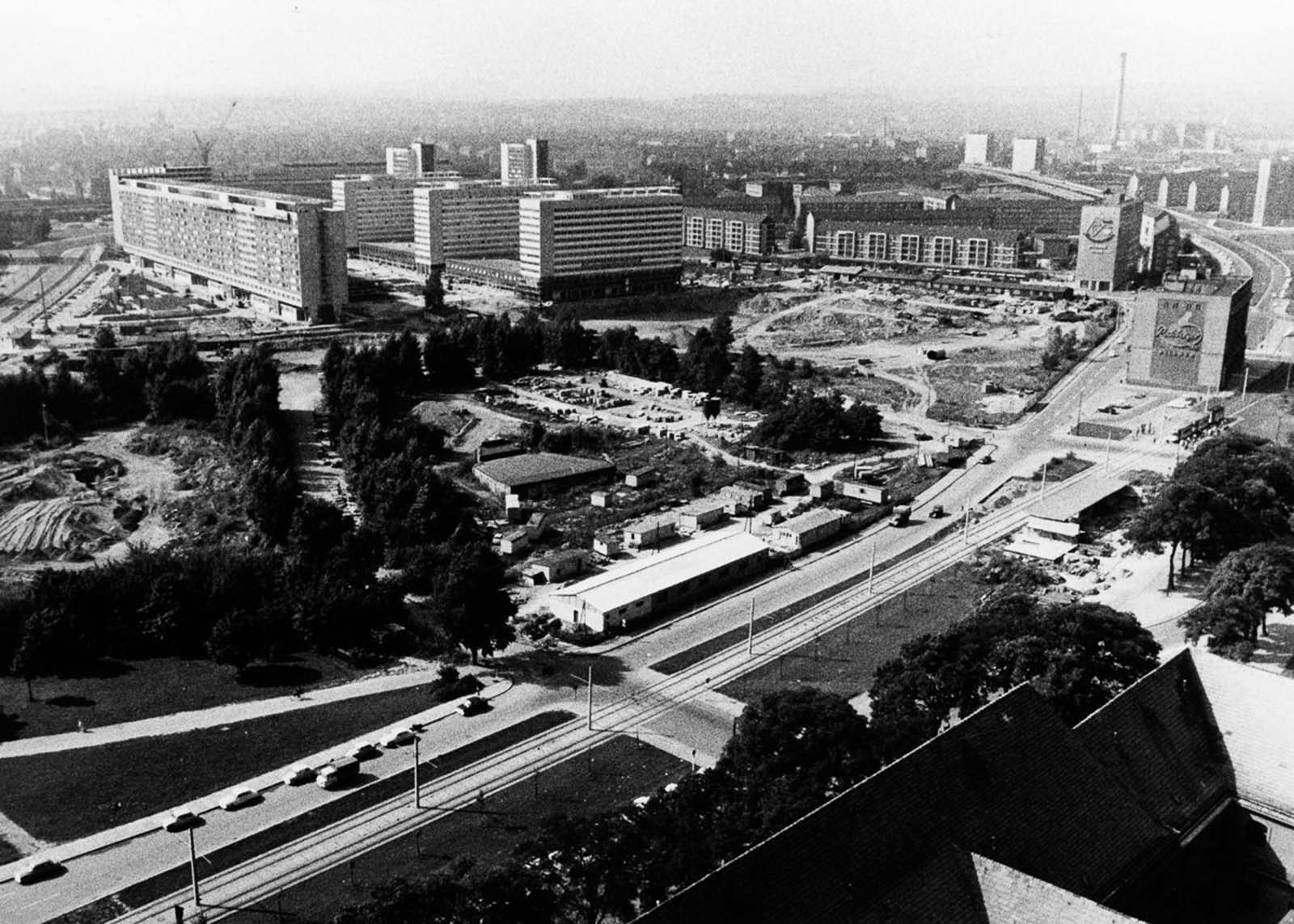In the final winter of World War II, the allied forces bombarded Dresden and killed thousands of the residents. The population of the city at the time of the bombing was greater than 650,000. During the night of 13-14 February, British Royal Air Forces dropped 1478 tons of high explosives and 1182 tons of incendiary bombs on the first bombing run and 800 tons of bombs on the second run. Later that day, the U.S. air forces drooped 950 tons of high-explosive bombs and more than 290 tons of incendiaries. The results were devastating: 24,866 out of 28,410 houses in the inner city of Dresden were destroyed, many of the schools, hospitals, and churches. The majority of the historic buildings, landmarks, and bridges were destroyed.
After World War II, thousands of Dresden’s residents volunteered in the daunting task of cleaning and rebuilding the city. Many of the historic buildings and landmarks were rebuilt, some of the ruins of churches, royal buildings, and palaces, such as the Gothic Sophienkirche, the Alberttheater, and the Wackerbarth-Palais, were razed rather than being repaired. Compared to West Germany, the majority of historic buildings were saved.
Here below are some historical photos that show the reconstruction of Dresden after World War II.


